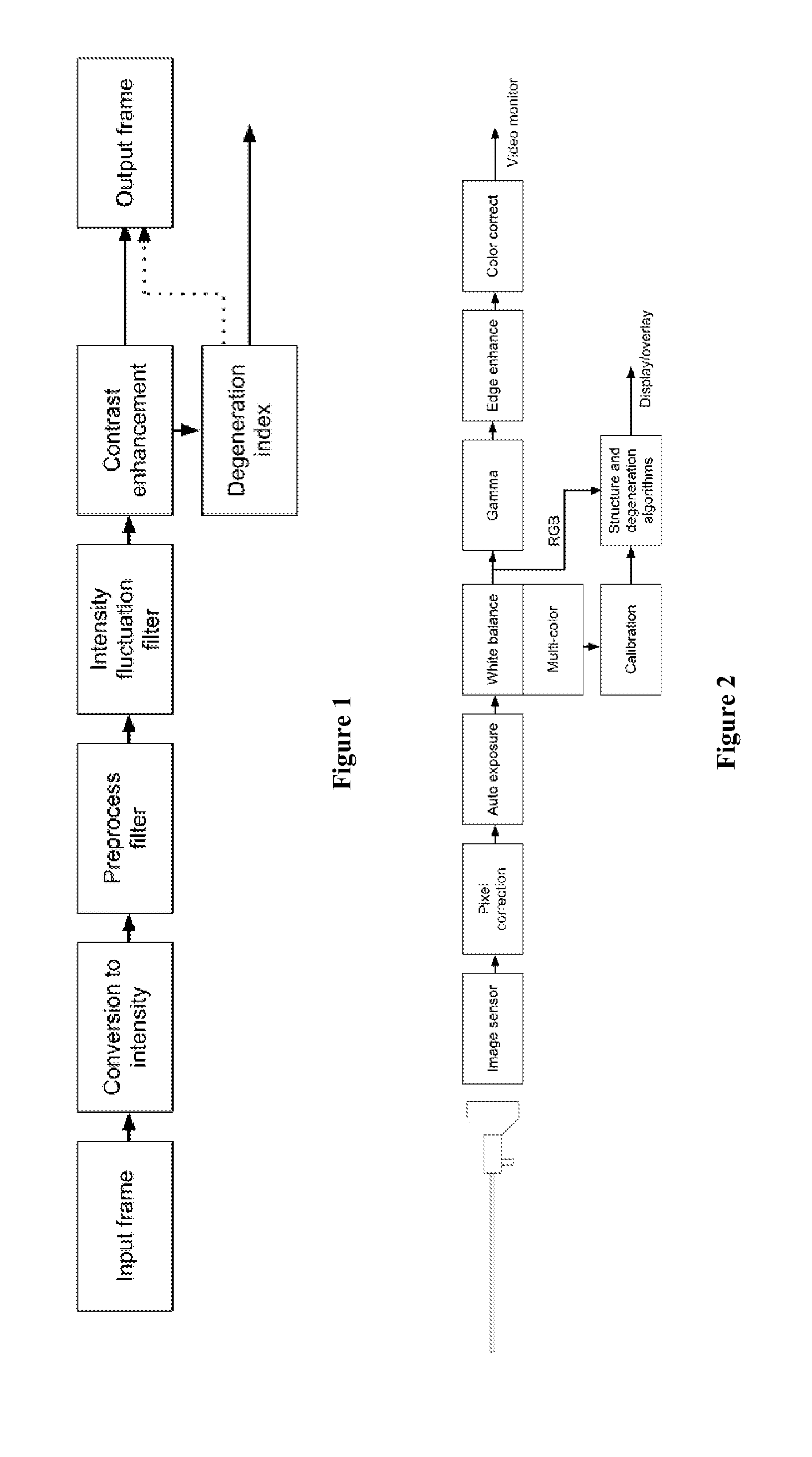Camera Arrangement and Image Processing Method for Quantifying Tissue Structure and Degeneration
- Summary
- Abstract
- Description
- Claims
- Application Information
AI Technical Summary
Benefits of technology
Problems solved by technology
Method used
Image
Examples
Embodiment Construction
[0018]The main steps of the tissue structure enhancement method according to the invention can be summarized as: Obtaining input data, conversion to intensity data, preprocess filtering, intensity fluctuation filtering, contrast enhancement and output frame presentation (FIG. 1). These different steps are described below, together with a description of the DI calculation.
Obtaining Input Data
[0019]Circuitry and processing within an endoscopic video camera are well suited to perform algorithm calculations and graphically present the result as an enhancement to the live arthroscopic image. For purposes of displaying the best endoscopic image on the surgical monitor, the raw red, green and blue (RGB) signals collected by the camera and endoscope are, in endoscopic cameras used today, modified by both linear and non-linear transformations. For example, edge enhancement, color correction and gamma correction. Such transformations may affect the quality of algorithm calculations. On the ot...
PUM
 Login to View More
Login to View More Abstract
Description
Claims
Application Information
 Login to View More
Login to View More - R&D
- Intellectual Property
- Life Sciences
- Materials
- Tech Scout
- Unparalleled Data Quality
- Higher Quality Content
- 60% Fewer Hallucinations
Browse by: Latest US Patents, China's latest patents, Technical Efficacy Thesaurus, Application Domain, Technology Topic, Popular Technical Reports.
© 2025 PatSnap. All rights reserved.Legal|Privacy policy|Modern Slavery Act Transparency Statement|Sitemap|About US| Contact US: help@patsnap.com



